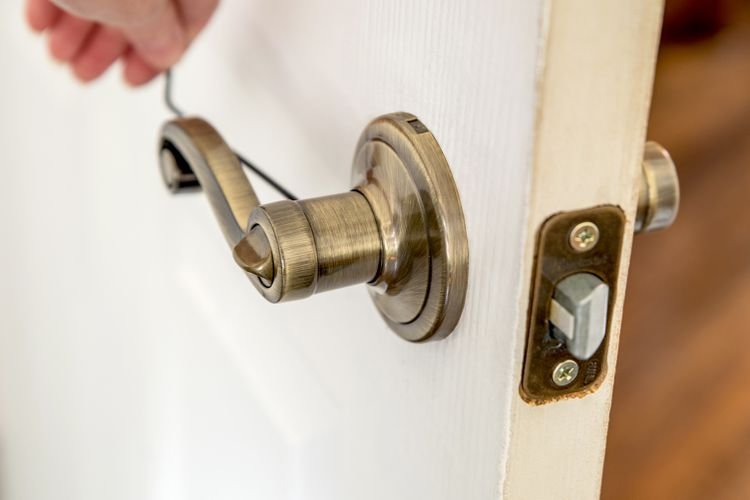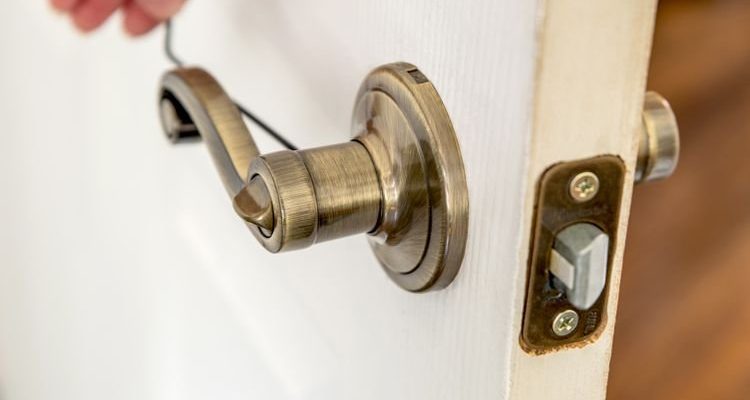
Diagnosing the problem is really the first step. If your door handle is wobbly, it could be just a loose screw or something more complicated. Think of it like troubleshooting a remote control. If it’s not working, sometimes you just need to change the batteries. In this situation, we’ll go step by step to figure out what might be wrong with your door handle and how to fix it.
Understanding the Components of a Door Handle
Before we dive into diagnosing, it’s best to understand what parts make up a door handle, especially for your specific *Lowe’s interior door handle*. Each handle typically includes:
- Handle: The part you grip to turn the latch or lock.
- Screws: Most handles are secured with screws that hold everything in place.
- Latch Mechanism: This part engages and disengages the door from the frame.
- Backplate: The decorative piece that covers the hole in the door.
With these components in mind, you can start diagnosing what might be causing the looseness. Understanding how each part interacts can help you spot the issue faster. You might be wondering, “What if it’s something else?” Don’t worry; we’ll cover all possibilities!
Identifying the Signs of a Loose Door Handle
So how do you know if your handle is truly loose? Sometimes, it’s not just about the handle wobbling. Here are a few clear signs:
- If the handle turns without engaging the latch, it’s a red flag.
- A gap between the handle and the door can indicate looseness.
- If you hear a rattling noise while turning, something’s definitely off.
- Lastly, if the handle feels unstable or requires extra force to operate, it’s time for a closer look.
If you notice any of these signs, don’t panic! Diagnosing the issue is a straightforward process. It’s like noticing your car is making a strange noise; you just need to investigate further to find the root cause.
Gathering Your Tools
Before you start pulling apart your door handle, it’s helpful to gather the necessary tools. You’ll want to have:
- A screwdriver (either Phillips or flat-head, depending on your screws)
- A flashlight to see into any tight spaces
- A small container to keep screws safe
- Optional: Loctite or wood glue if you need extra hold
Having your tools ready can make the process smoother—like preparing for a cooking recipe so you don’t have to run back to the pantry midway. Once you have everything in hand, you’re ready to assess your door handle!
Checking for Loose Screws
Start by examining the handle. Often, a loose handle is simply due to loose screws. Using your screwdriver, follow these steps:
1. Remove Any Cover Plates: If your handle has a decorative cover, gently pry it off to expose the screws.
2. Tighten the Screws: Carefully tighten any loose screws you see. It’s important not to overtighten, as this can strip the screws or damage the handle.
3. Reattach the Cover Plate: Once everything feels secure, put the cover plate back in place.
After this quick fix, test the handle again. If it’s still loose, don’t lose hope. There are other potential culprits we need to explore.
Inspecting the Latch Mechanism
If tightening the screws doesn’t work, the next area to check is the latch mechanism. Sometimes, it can be misaligned or damaged, which might make the handle feel loose. Here’s how to inspect it:
1. Remove the Handle Again: Detach the handle to get to the latch.
2. Look for Misalignment: Check if the latch bolt is seated correctly. You should see a clear path for it to engage with the strike plate on the door frame.
3. Adjust As Needed: If it’s misaligned, loosen the screws on the latch plate slightly and reposition it before tightening again.
After adjusting, reattach the handle and give it another test. If it’s still not working, keep going—this isn’t over yet!
Considering Wear and Tear
Sometimes, a loose door handle is less about a quick fix and more about wear and tear. If your *Lowe’s interior door handle* is older or has been used heavily, it may be time to consider replacing parts. But first, do a thorough check for things like:
- Cracks in the handle or backplate
- Worn-out latch mechanisms that don’t function properly
- Rust or corrosion, especially if the door is exposed to moisture
If you notice any of these issues, replacing the handle might be your best option. Honestly, it can sometimes be easier than trying to fix something beyond repair.
Final Thoughts and Troubleshooting
Diagnosing a loose door handle on a *Lowe’s interior door handle* doesn’t have to be overwhelming. By understanding the components, recognizing the signs, and following a few simple steps, you can often pinpoint and fix the problem yourself. Whether it’s tightening screws, checking the latch, or considering replacement, you’ve got this!
If you’re still having trouble, don’t hesitate to reach out to a professional. Sometimes, a second set of eyes can make all the difference. Remember, the goal is a door handle that works smoothly every time you use it, and with a little patience, you can achieve that. Happy fixing!
